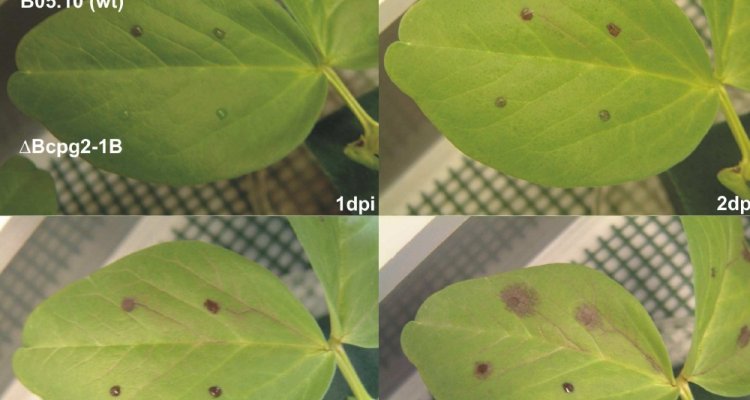
Project
Pathogen infection mechanisms
Research focuses on molecular-genetic approaches to unravel the mechanisms by which Botrytis species infect plants, with emphasis on Botrytis cinerea and on genes encoding secreted proteins. Fungal mutants are made by targeted gene replacement and tested for (possible loss of) virulence on tomato and other plants, using a quantitative infection assay. Over the past 15 years, we have studied Botrytis cinerea genes encoding a spectrum of secreted enzymes: cutinase, pectinases, proteases, laccases, catalase, and phytotoxic proteins of the NLP family. Also a gene that encodes an intracellular enzyme involved in oxalate biosynthesis was studied. Of all the mutants that were generated, only two pectinase-deficient mutants showed a detectable reduction in virulence.
The host-specific pathogen Botrytis elliptica induces programmed cell death in its host plant lily, by means of a secreted proteinaceous Host-Specific Toxin. Induction of programmed cell death is essential for infection. The Botrytis elliptica secreted NLP proteins are not phytotoxic for lily and they are not essential for virulence. The current research focuses on the pathway for galacturonic acid catabolism and its importance for virulence, in relation to the uronic acid content of plant cell walls.”
Our general view on the infection strategies of Botrytis and the role of secreted enzymes and metabolites in pathogenesis is described in reviews, the most recent dating May 2010.